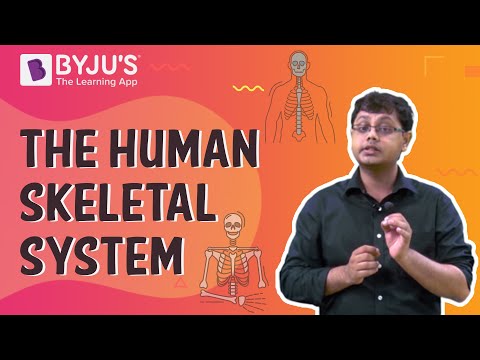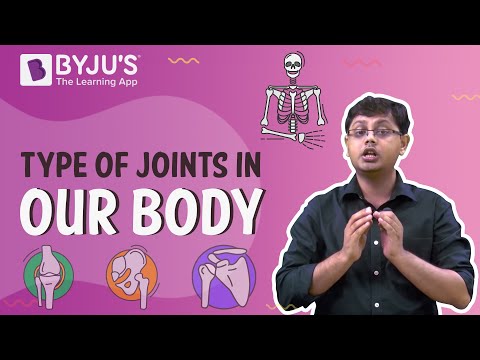According to the CBSE Syllabus 2023-24, this chapter has been renumbered as Chapter 17.
Locomotion is referred to as the voluntary movement performed by animals. The method varies depending on the habitat and demand of the situation. Typically, locomotion is carried out in search of shelter, food, mate, suitable climatic conditions, breeding grounds, and escaping from predators.
Read more, Important Questions for Class 11 Biology- Locomotion and Movement
Types of Movement
Over the aeons, evolution has developed many forms of locomotion and movement. Prehistoric squid-like creatures called ammonites used jet propulsion to move around in the ancient seas. Snails use adhesive locomotion, where it slowly contracts and relaxes its muscular foot, propelling themselves along a layer of mucus. Humans are bipedal, meaning that they use their hind limbs for locomotion. However, this form of locomotion is not very common in the animal kingdom other than in primates.
Muscle
Anatomically, an adult human has between 650 and 840 muscles in the body. These muscles are categorized into 3 types, namely:
- Skeletal muscle
- Visceral muscle
- Cardiac muscle
Skeletal muscle
These are closely associated with the skeletal components of the body having a striped appearance when viewed under a microscope hence known as striated muscles. Primarily, these muscles are involved in locomotory actions and changes in body posture.
Visceral muscle
These are situated in the inner walls of the hollow visceral structures of the body, such as the reproductive tract, alimentary canal etc. and show no striations. As they appear smooth, they are referred to as smooth muscles. These involuntary muscles enable the transportation of food through the digestive tract and the movement of gametes through the genital tract.
Cardiac muscle
These are the muscles of the heart, where the cells are arranged in a branching pattern forming cardiac muscles. These are striated and involuntary in nature.
Related Links: Sliding Filament Theory
Skeletal System
In an adult, the skeletal system consists of about 206 bones, which are all interconnected via a network of tendons, ligaments and cartilage. The femur is a rather remarkable bone as it can withstand forces of over 4,000 newtons. However, the position and angle of attack can change these numbers.
Skeletal muscle is composed of muscle fibres having smaller units known as myofibrils. Three types of proteins make up each myofibril, namely contractile, regulatory and structural proteins.
Contractile proteins are actin (thin filament) and myosin (thick filament), where each of the actin filament is composed of two helical “F” actin (filamentous actin), and each ‘F’ actin is composed of multiple units of ‘G’ actin. Along with the ‘F’ actin, two filaments of regulatory proteins, troponin and tropomyosin, are found at regular intervals. During muscle relaxation, troponin covers the binding sites for myosin on actin filaments.
For more information on Human Skeletal System, watch the below video

Joints
Joints join bones and even cartilage, they are essential for movement. They can be classified as follows:
Fibrous joints – allow no movement. Example- flat skull bones, fusing end-to-end with the help of dense fibrous connective tissues forming sutures and finally forming cranium.
Cartilaginous joints – bones here are combined by the cartilages. The joint between adjacent vertebrae in the vertebral column is of this pattern allowing restricted movements.
Synovial joints – fluid-filled synovial cavities between articulating surfaces of two bones, permitting some movement. For example, hinge joint, ball and socket joint etc.
See Also: Muscle Contraction and Contractile Protein
For more information on The Types of Joint in Our Body, watch the below videos


Disorders of The Muscular and Skeletal System
- Myasthenia gravis
- Osteoporosis
- Muscular dystrophy
- Gout
- Tetany
- Arthritis
Important questions for Locomotion and Movement Class 11
- Define the following:
- Actin
- Myoglobin
- Visceral muscle
- What is the difference between a cardiac muscle and a skeletal muscle?
- How does muscle contraction take place?
- Differentiate between red muscle and white muscle
- How many pairs of ribs does an adult human have?
- What is the sternum?
Explore more about muscles, skeletons and movement only on Locomotion and Movement Class 11 Notes – Chapter 20, right here at BYJU’S.
| Also Access |
| NCERT Solutions for Class 11 Biology Chapter 20 |
| NCERT Exemplar for Class 11 Biology Chapter 20 |
Further Reading:-
| Difference Between Locomotion and Movement | Human Anatomy: Skeleton |
Frequently Asked Questions on CBSE Class 11 CBSE Biology Notes Chapter 20 Locomotion and Movement
What is the meaning of locomotion?
Any kind of movement made or the ability to move is called locomotion.
What is the main function of the cartilage?
The most important functions of cartilage are that it gives shape, support, and structure to other body tissues. It also helps to cushion joints. Cartilage also smoothens the bone surfaces at the joints.
What is myoglobin?
Myoglobin is an iron- and oxygen-binding protein found in the cardiac and skeletal muscle tissue of vertebrates in general and in almost all mammals.
Comments